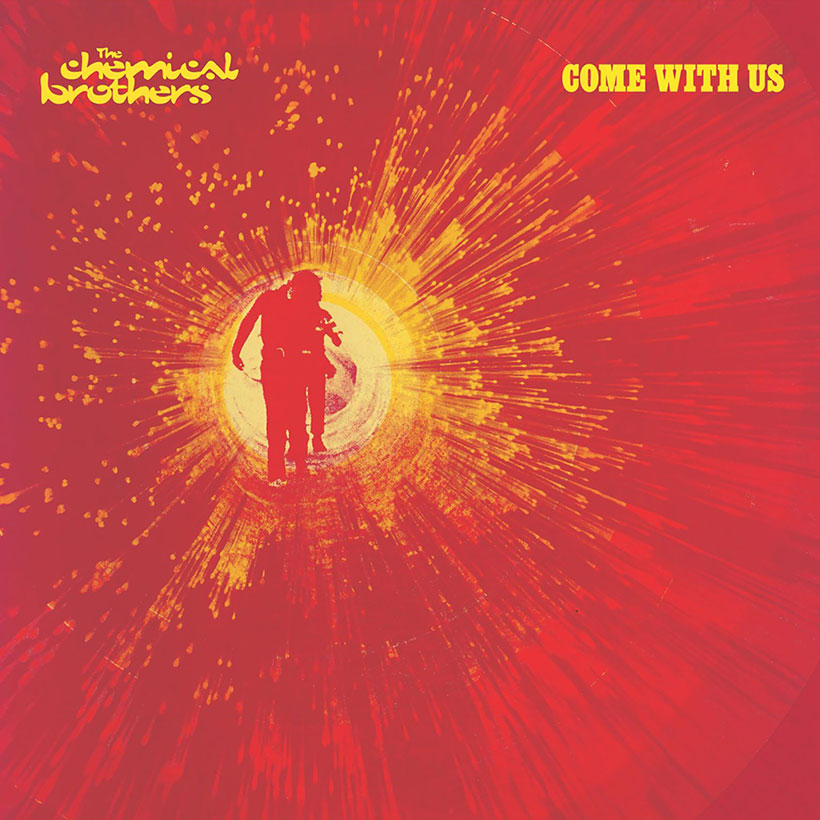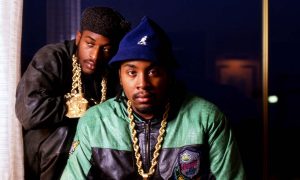Tom Rowlands and Ed Simons (aka The Chemical Brothers) delivered a smash fourth set on January 28, 2002: Come With Us. Rebuilding electronica for the new millennium, they unleashed an album packed with dancefloor smashes, starting with the ominous strings and skittering synths of the album’s dizzyingly spiraling title track, which was also given a stuttering, pumping Fatboy Slim overhaul for single release.
Listen to Come With Us on Apple Music and Spotify.
The firestorm we’d hoped for
Come With Us’ lead single, “It Began In Afrika,” with its nod to the origins of beat-driven dance music, started life in 2000, at the very beginning of the album’s recording process. The following year, it became part of the duo’s ongoing Electronic Battle Weapon advance release series. The heady acidic builder’s manic, fierce percussive workout comes from talented M People member and Nightmares On Wax collaborator Shovell, clearly letting out all his pent-up frustrations in one go. Many a club night has featured an inane live percussionist, but this was the firestorm we had always hoped for from The Chemical Brothers.
Come With Us then turns on a dime, for the much slower and funkier “Galaxy Bounce,” which had previously appeared on the Tomb Raider movie soundtrack, and which sets up the much-loved, swelling “Star Guitar,” with its blurry Balearic six-string sample from David Bowie’s glam rock classic “Starman,” and the voice of British session singer Beverley Skeete. It was so good that Fatboy Slim turned down the opportunity to remix the track, thinking it couldn’t be improved upon. UK house legend Pete Heller stepped into the breach to provide the fizzy, tracer-trailed extended single mixes instead, front-loading the vocals, while acclaimed director Michel Gondry came up with the beat-synced train journey video.
An offer that couldn’t be refused
“Hoops” keeps the hazy vibe going with a psychedelic loop from The Association’s 60s single “Round Again,” which sets up the thumping and clapping beats, cut across with more of the Chems’ trademark tight scratches. The gnarly, pitch-bent “My Elastic Eye” follows, with its eerie early electronic music sample (something of an underlying theme on Come With Us) which now sounds ripe for use on a trap-style hip-hop record.
The Chems reunited with regular collaborator, English singer-songwriter Beth Orton, for the blissed-out, folktronic ballad “The State We’re In,” and finally returned the favor for the first time that year, with a production credit on Daybreaker, Orton’s third major album release. The steamy, upbeat, cowbell-festooned “Denmark” then turns the heat back up again, with a burning saxophone from Jim Hunt, before another psychedelic piece rooted in vintage samples arrives in the shape of “Pioneer Skies” and its hypnotic, train-like drums.
The album’s most high-profile guest comes in the shape of The Verve’s Richard Ashcroft, who stars on epic closing number “The Test,” with its 70s prog sample, and a similar vibe to the brothers’ iconic “Setting Sun” single with Noel Gallagher. It was gifted an effective underwater video to help it along the way.
Four albums in, there was no let-up in The Chemical Brothers’ stream of kaleidoscopic dance hits and, once more, there were absorbing mellower moments as well. Fans agreed. After this album was released in late January, it went straight to No.1 on the UK chart of February 9, replacing Stereophonics’ Just Enough Education To Perform. It also went to the top of the Australian charts and was the group’s third Top 40 album in the US where, like Surrender, it peaked at No.32.




